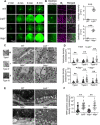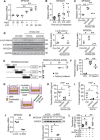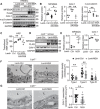Wnt signaling activates MFSD2A to suppress vascular endothelial transcytosis and maintain blood-retinal barrier
- PMID: 32923627
- PMCID: PMC7455181
- DOI: 10.1126/sciadv.aba7457
Wnt signaling activates MFSD2A to suppress vascular endothelial transcytosis and maintain blood-retinal barrier
Abstract
Breakdown of the blood-retinal barrier (BRB) causes retinal edema and vision loss. We investigated the role of Wnt signaling in maintaining the BRB by limiting transcytosis. Mice lacking either the Wnt co-receptor low-density lipoprotein receptor-related protein 5 (Lrp5-/- ) or the Wnt ligand Norrin (Ndpy/- ) exhibit increased retinal vascular leakage and enhanced endothelial transcytosis. Wnt signaling directly controls the transcription of an endothelium-specific transcytosis inhibitor, major facilitator superfamily domain-containing protein 2a (MFSD2A), in a β-catenin-dependent manner. MFSD2A overexpression reverses Wnt deficiency-induced transcytosis in endothelial cells and in retinas. Moreover, Wnt signaling mediates MFSD2A-dependent vascular endothelium transcytosis through a caveolin-1 (CAV-1)-positive caveolae pathway. In addition, levels of omega-3 fatty acids are also decreased in Wnt signaling-deficient retinas, reflecting the basic function of MFSD2A as a lipid transporter. Our findings uncovered the Wnt/β-catenin/MFSD2A/CAV-1 axis as a key pathway governing endothelium transcytosis and inner BRB integrity.
Copyright © 2020 The Authors, some rights reserved; exclusive licensee American Association for the Advancement of Science. No claim to original U.S. Government Works. Distributed under a Creative Commons Attribution NonCommercial License 4.0 (CC BY-NC).
Figures






References
Publication types
Grants and funding
LinkOut - more resources
Full Text Sources
Other Literature Sources
Molecular Biology Databases
Research Materials

